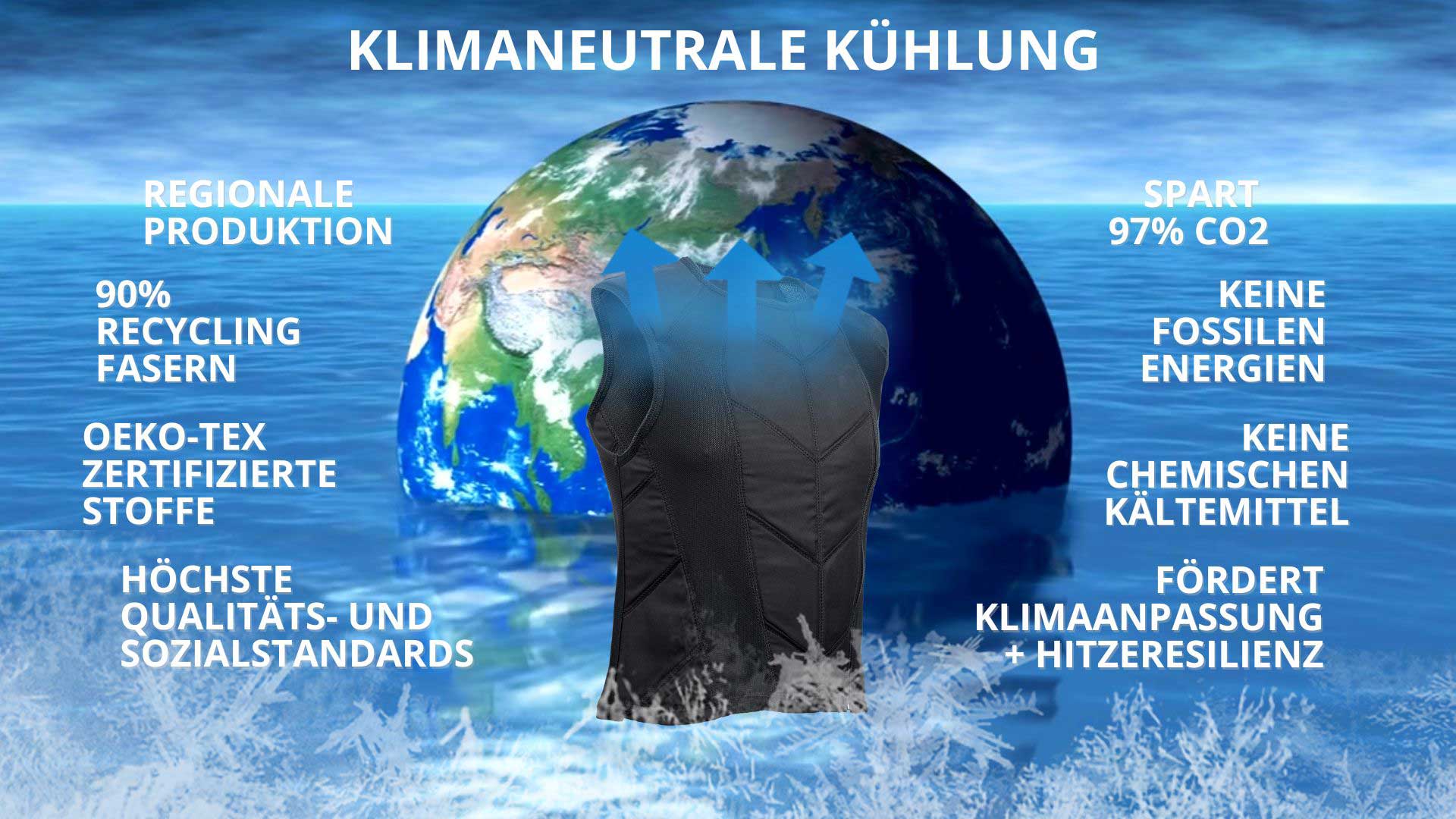An increasing number of heat-related deaths: this headline startled the population this spring. Climate change is becoming a direct health risk. The number of deaths has increased more than eightfold in the last 20 years. Researchers expect the risk of death to rise. To prevent this, more and more cities and municipalities are drawing up heat action plans to protect people’s health. So far, however, this has mainly included medium- and long-term measures, which might be too late for some people. A quick but effective heat protection or emergency heat protection plan must now be introduced immediately and be suitable for everyday use. And all this without polluting the environment any further. The Ulm-based company pervormance international GmbH offers a suitable solution with E.COOLINE cooling textiles.
According to a study, climate change could become a greater challenge for people’s health in Germany than previously assumed. Scientists’ model calculations show that the number of heat-related deaths in Germany is in the upper range in a global comparison. Scientists reported in the scientific journal “The Lancet” that the reason for this is the increasing number of heat days per year in combination with an ageing population. “This is the beginning of the disaster”, says Christian Schulz, Executive Director of the German Climate Change and Health Alliance (KLUG).
Heat stress affects older people in hospitals and nursing homes as well as those receiving care at home. But even the body’s own cooling system of young, healthy people is overwhelmed at over 40°C. Not to mention children, pregnant women, people with pre-existing conditions or with health risk factors such as diabetes, COPD or MS. Also the current WIDO Report “Climate and Health” by the AOK and the Intergovernmental Panel on Climate Change confirm this.
We need heat emergency measures from 25°C onwards.
Unfortunately, there is no medication and no vaccination against heat. Until now, it had been assumed that a healthy person could not survive a temperature of 35°C at 100% humidity (equivalent to 46°C at 50% RH) for much longer than 6 hours. Scientists at Pennsylvania University have now tested this assumption for the first time in a study and found that the temperature limits in young and healthy test subjects were only 30-31°C (100% LF). Lower humidity did not lead to more heat tolerance either. Instead, the limit temperature was “only” 25-28°C. This is probably even lower for older people or those affected with previous illnesses.
For this reason, calls for simple but effective air-conditioning measures are becoming increasingly urgent – and national heat protection plans and adaptation strategies are being urged by experts, such as the President of the German Medical Association Klaus Reinhardt. In 2017 in Germany, the Federal/State Ad Hoc Working Group “Health Adaptation to the Consequences of Climate Change” (GAK) developed recommendations for action for states and municipalities on the preparation of heat action plans for the protection of human health, which are partly based on a guideline of the World Health Organisation.
However, most recommendations, such as architectural measures, are only effective in the medium to long term, are often expensive and sometimes difficult to implement. And outdoors, conventional air conditioning is not even possible.
Furthermore, there is no staff available to solve the tasks of heat protection in clinics, nursing homes or even at home. The idea of setting up cold rooms everywhere in cities is hardly logistically feasible. Even staying for hours or days in so-called cooling centres, i.e. public, cold rooms, for example in shopping arcades and railway stations, are perhaps obvious ideas, but not entirely practicable. And what’s more, it’s ecological nonsense, since the required air-conditioning and refrigeration units further fuel global warming with climate-damaging refrigerants, consume a lot of energy and thus produce high CO2 emissions. A vicious circle!
So what to do to quickly and effectively implement sustainable air conditioning?
As a supplement to structural and other medium to long-term measures, 3D technology from Ulm could be a simple, effective, affordable and climate-friendly solution. With cooling vests and shirts, cooling scarves, cooling baseball caps and arm and leg cooling, everyone can protect themselves in high temperatures and stay healthy, focused and productive. Indoors and outdoors! And there is a heat emergency kit, specifically made for heat emergency situations.
E.COOLINE has a lot in its portfolio. Actively cooling sheets, blankets and plaids as well as cooling curtains or room dividers – including shades on windows, doors or even from the outside (if necessary, even on roofs or exterior walls), offer climate-neutral and environmentally friendly cooling, especially in or on existing buildings or in public places.
The integrated COOLINE SX3 technology in all products with smart fibres in a 3D structure generates cooling energy of up to 660 watts, which can cool down by up to 12°C as required – for several hours. The cooling effect has been confirmed by the Hohenstein Institute. The washable cooling garments with their patented “Made in Germany” technology do not require any environmentally harmful energy sources or refrigerants and are climate-neutral.
According to the climate experts of climate partners (Report), this saves up to 97% CO2 compared to air conditioning.
















